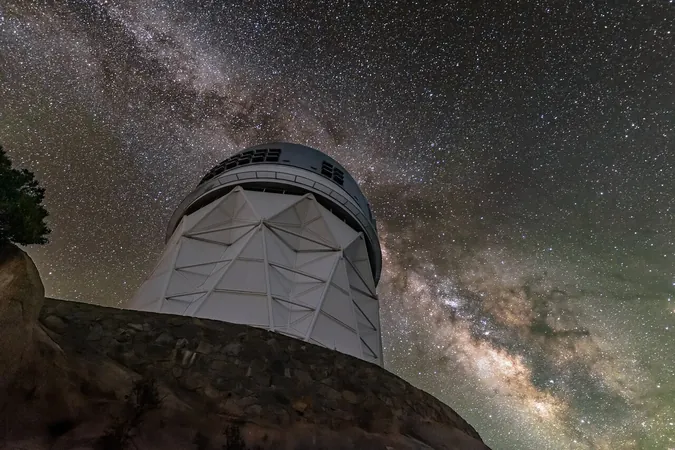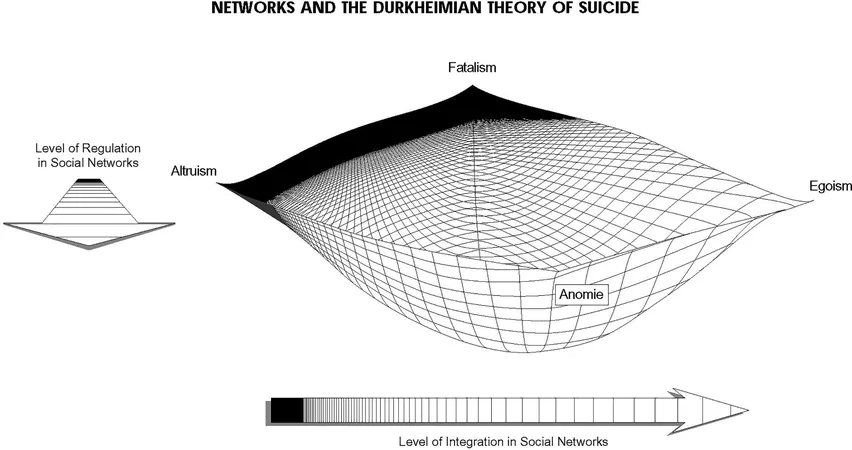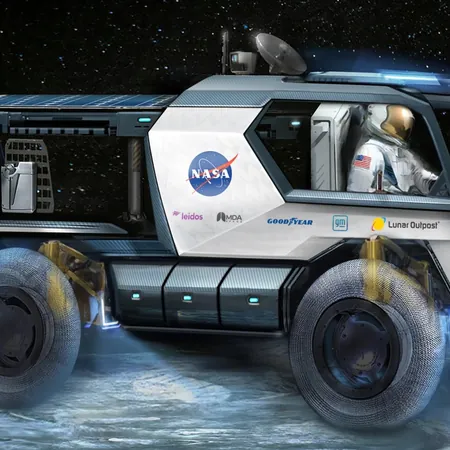
Einstein’s Legacy Confirmed! New Research Solidifies His Gravitational Theories
2024-11-25
Author: Jacques
When Albert Einstein unveiled his groundbreaking theory of general relativity in 1915, he forever transformed our understanding of the cosmos. His model of gravity revealed that what we had accepted through Newton’s laws was merely a simplification, a stepping stone toward a far more profound conceptualization of the universe. Einstein posited that gravity is not simply a force but a curvature of spacetime itself, essentially interwoven into the very fabric of the universe.
Over the past century, humanity’s comprehension of the cosmos has advanced at a rapid pace, much beyond what Einstein might have envisioned. Observations like gravitational lensing have provided robust support for general relativity. However, certain phenomena, such as the rotation of galaxies, suggest discrepancies that necessitated the introduction of dark matter, an unseen entity that comprises about 25% of the universe's total mass-energy content.
Moreover, the expansion of the universe has exhibited unexpected acceleration, implying the existence of dark energy, which forms about 70% of the cosmos. This realization has prompted some researchers to call for an entirely new cosmological model—one that could explain the dynamics of celestial bodies without resorting to the mysterious dark components that have eluded detection in laboratory conditions.
The standard cosmological model, known as LCDM, incorporates these elements: 'L' represents dark energy (lambda), and 'CDM' signifies cold dark matter. This model not only outlines an expanding universe that originated from a hot, dense state approximately 13.78 billion years ago but also aligns well with various astronomical observations. Currently, it is the most widely supported paradigm.
However, modified gravity theories have been proposed as potential alternatives to LCDM, challenging its fundamental premises. To dethrone this established model, any new theories would have to adequately explain all observed phenomena predicted by LCDM while also eliminating the necessity for dark matter and energy.
Recent developments have significantly intensified the scrutiny on these modified gravity theories. A comprehensive series of studies from the Dark Energy Spectroscopic Instrument (DESI) collaboration has substantiated the LCDM model’s alignment with Einstein’s theories. The DESI survey meticulously mapped approximately 6 million galaxies over an astonishing temporal span of 11 billion years, resulting in the most extensive three-dimensional map of the universe ever created.
This meticulous survey yielded critical insights about the clustering of galaxies. The LCDM model sets forth strict predictions for cosmic structure. For instance, if dark energy were merely a repulsive force, the evolutionary pattern of clustering would differ from what has been observed. Similarly, if dark matter was merely an illusion conjured up by modified gravity, the scale of galactic clustering would deviate as well.
The results from this latest DESI survey robustly demonstrate that many proposed modified gravity models simply do not hold water. This research imposes significant constraints on the viability of alternative theories, effectively ruling out many current propositions. Consequently, based on these fresh insights, the standard cosmological model encompassing Einsteinian gravity, dark matter, and dark energy emerges as the most accurate framework for understanding the observed universe.
As scientists continue to unlock the mysteries of the cosmos, Albert Einstein’s predictions stand tall, echoing across the eons and reinforcing his enduring legacy in the world of physics. Stay tuned—new cosmic revelations are just on the horizon!









 Brasil (PT)
Brasil (PT)
 Canada (EN)
Canada (EN)
 Chile (ES)
Chile (ES)
 España (ES)
España (ES)
 France (FR)
France (FR)
 Hong Kong (EN)
Hong Kong (EN)
 Italia (IT)
Italia (IT)
 日本 (JA)
日本 (JA)
 Magyarország (HU)
Magyarország (HU)
 Norge (NO)
Norge (NO)
 Polska (PL)
Polska (PL)
 Schweiz (DE)
Schweiz (DE)
 Singapore (EN)
Singapore (EN)
 Sverige (SV)
Sverige (SV)
 Suomi (FI)
Suomi (FI)
 Türkiye (TR)
Türkiye (TR)